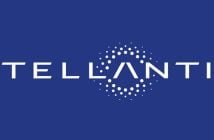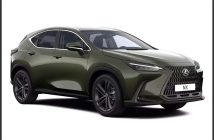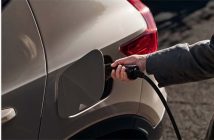+++ If you’ve been car shopping lately, you’re probably aware that most new models have at least a few Advanced Driver Assistance Systems ( ADAS ). Tech like automatic emergency braking and forward collision warnings are table stakes to compete in today’s auto market, but a group of safety and consumer experts feel that the market is clouded with confusing buzzwords instead of clear descriptions. A team of people from 6 organizations made its case for standardizing the names of advanced driver assistance technologies. Experts from AAA, Consumer Reports, J.D. Power, the National Safety Council, PAVE, and SAE International devised this list of terms that aim to clarify and simplify the sometimes confusing world of driver assistance tech. The group’s recommendations cover the significant safety and driver assistance systems that most of us have heard of now, such as blind spot monitoring, adaptive cruise control, backup cameras, and lane departure warnings. While many, or even most of the advanced driver aids on the market today, do the same things, many have names that don’t fully explain what they are and what they do. A great example is Volkswagen’s suite of driver aids, where titles like Front Assist, Emergency Assist and Lane Assist don’t explain functionality as clearly as terms like automatic emergency braking and lane departure warnings. And the term Tesla Autopilot has long been accused of confusing, or even deceiving, consumers into thinking the system is more than a basic driver assistance suite when it is not. The group notes that they don’t intend to replace automakers’ safety tech packages and says that it is instead focused on the individual features themselves. In other words, naming the group of features like Toyota Safety Sense or Honda Sensing is fine, but renaming blind spot monitoring or forward collision warning is not. While this report may cause some automakers to reconsider their positions on naming safety equipment, it’s unlikely to cause a seismic shift in how the industry names features. The influence of marketing departments on technical features has been a thing since the dawn of time, so it’s difficult to imagine the practice will stop here. Companies (sometimes) change when laws change, so a significant shift in naming conventions may require legal intervention. +++
+++ Today is the 32nd anniversary of the Americans with Disabilities Act going into effect, with Mini and Ford of Europe recently unveiling innovations to make transportation easier for those who might have difficulty with the basics of getting around. In Germany, Mini created a version of the battery-electric Cooper SE with hand-operated driving controls, combining that with a series of training courses for people with disabilities. Ford’s innovation stuck to the EV side and the German heartland, too, with the American automaker beginning real-world trials of an AUTOMATIC CHARGING STATION FITTED WITH A ROBOTIC ARM . While we wait for wireless charging to appear in parking garages and on roadways, getting full-service from a charging station would help a lot of EV users, especially the disabled. For those who don’t remember, Tesla showed a “solid metal snake” in 2015 that the EV maker was testing to perform the same task. The “freaky”, “terrifying” and “sensual” appendage disappeared and probably won’t return. More recently, Volkswagen showed an autonomous charging robot prototype that could bring a charger to a vehicle parked in a garage, then hook up and disconnect on its own. Ford’s device does without the reptilian choreography of the former and the mobility of the latter; a simple, articulated arm emerges to line itself up with a charge port using cameras. Dortmund University designed the device, which can be controlled from a smartphone app inside the vehicle, where occupants are able to monitor charge status in the FordPass app. When the vehicle’s fully charged or at the requested time, the arm returns to its home in the charging station. The automaker says it’s looking forward to development of an autonomous valet-like charging system, where a vehicle owner could send his car to a station that would refill the battery without any human input, then the vehicle would return to the owner. Bridging the gap from here to there, Ford will work with European charging network Ionity “to further improve the robot charging station”. +++
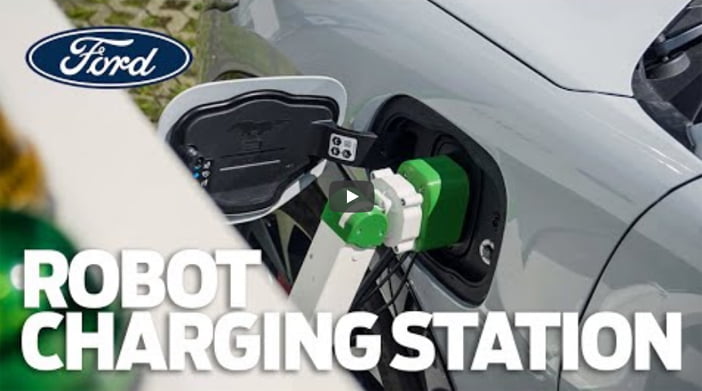
+++ Undeterred by the slowing global economy, buyers of key components in the powering of electric vehicles are stepping up efforts to lock in supplies, with two of the world’s biggest automakers signing direct deals with producers of so-called BATTERY METALS . General Motors announced 3 deals Tuesday for supplies of raw materials needed for its EV fleet. Less than a week ago, Ford revealed a list of suppliers of inputs ranging from Argentine lithium to Indonesian nickel; enough to build 600.000 EVs a year. The world’s shift into electric vehicles means demand growth for lithium, nickel, cobalt and other key ingredients in EV batteries is outpacing supply that’s been hampered by Covid-related logistical woes and a general lack of investment, pushing up prices. There are also growing concerns over China’s dominance of refining and manufacturing capacity of the materials. Reliance on the Asian nation is now seen as a vulnerability amid trade and political tensions that are spurring a rethink of global supply lines. “These deals underscore the importance of locking in long-term and diverse sources of raw materials”, said Chris Berry, president of House Mountain Partners, an industry consultancy. “Access to the raw materials is going to be very interesting to watch in the back half of this decade”. Automakers are facing delayed deliveries across the EV space, exacerbating supply-surety concerns. That’s propelling them to demonstrate supply chain management. “Announcing agreements with materials producers can be a differentiating factor for the progression of EV manufacturers”, said David Deckelbaum, an analyst at Cowen and Co. The first of GM’s new arrangements for its next-generation EVs is with LG Chem to supply 968.000 metric tons of cathode material through 2030. The second is a multi-year agreement with Livent to secure lithium. The third is a venture with Posco Chemical to supply cathode materials from 2023 to 2025. Ford said it secured enough battery supply to build more than half a million electric vehicles annually by late next year, a quantum leap above the 27.140 battery-powered cars it sold in the US last year. It has signed contracts with suppliers representing 60 gigawatt hours of annual battery capacity. The 2 carmakers’ suppliers mostly have or will have regional facilities to provide materials, highlighting efforts to rely less on Chinese refining and manufacturing. “Regionalized supply chains are becoming a reality”, Berry said. “All of the talk about strategic vulnerability is slowly being turned into action and this is perhaps the most encouraging aspect of these off-take deals”. +++
+++ State-funded financial incentives to buy electric cars in GERMANY will be reduced from next year after an agreement within the governing coalition, people familiar with the discussions told. The incentives, or premiums, paid to buyers of electric cars will expire completely once an allocated sum of 2.5 billion euros is spent, according to the government sources. Under the plan, premiums for purely electric-powered vehicles priced below 40.000 euros will fall from 6.000 euros currently to 4.500 euros at the beginning of next year, and to 3.000 euros over the course of 2023. The premium available for cars costing 40.000-65.000 euros that run purely on electric power will drop to 3.000 euros at the start of next year from 5.000 euros currently. After mid-2023 this will only be paid out for vehicles valued at up to 45.000 euros, the sources said. There is currently no subsidy for people buying cars at a purchase price of over 65.000 euros. The government is also planning to axe incentives for plug-in hybrid cars at the end of the year entirely; something Economy minister Robert Habeck of the Greens had advocated amid doubts over their climate credentials. The German Cabinet is expected to sign off on a draft climate action budget to provide the funding for the scheme on Wednesday. The finance and economy ministries declined to comment on the incentives. Sales of all-electric cars almost doubled in 2021 compared to the previous year to 328.000, thanks in part to the scheme. In total there are now over 600.000 electric-powered vehicles on German roads. Including hybrids, there are well over 1 million. The share of purely electric cars in new car registrations in Germany recently came in at around 14%. +++
+++ The National Highway Transportation Safety Administration (NHTSA) in the United States is investigating a potential safety issue that could be present in more than 1 million JEEP Cherokees sold for the 2014-2020 model years. Per owner complaints, these cars may be equipped with an electronic parking brake control module that is susceptible to water intrusion. If the water causes a short, it can result in uncommanded activation of the parking brake while the vehicle is in motion, which can lead to a stall, NHTSA says. If you follow Jeep Cherokee news closely (and who doesn’t?), this issue may ring a bell. That’s because Jeep was on the hook for recalling the Cherokee for water intrusion into the liftgate control module, which is fitted right next to the parking brake module. In that instance, short circuits had the potential to cause a fire, which has not so far been indicated as a potential side effect of the new parking brake issue, but any time electricity is involved, there’s usually at least some risk for ignition. The Cherokee is just 1 of 4 Stellantis models with a new open investigation. NHTSA is also looking into reports of a transmission problem that could strand owners of 2019-2021 Chrysler Pacifica plug-in hybrid minivans and a crankshaft and/or camshaft position sensor problem that could cause a stall in the 2016 Dodge Journey and Jeep Compass. Between the 2, these investigations cover an additional 300.000 vehicles. None of these vehicles are being recalled at this point, however a NHTSA investigation is the first major step toward a recall being initiated. The regulator will work with Stellantis to determine whether a recall is necessary. +++
+++ We are thought to be 3 years away from the successor of the LEXUS LFA arriving in showrooms. We are thought to be less than a month from the debut of a pre-production version of Lexus’ coming supercar, which could take place at next month’s Monterey Car Week. Persistent reports say Lexus is preparing 2 versions, 1 with a hybridized twin-turbo V8, 1 with a battery-electric powertrain; the former is thought to be the one on show in California in August, the latter not ready for primetime until around 2030. One of the many questions has been, “Where is that V8 coming from?” Japanese media say that Lexus will use the 5.0-liter TTV8 in the LC500 endurance racer for the super coupe being referred to as LFA II. This particular engine has been a specter, rumored for ages to make production but never seen. Way back in 2014, rumors that were already a year old posited a trio of engine options for the coupe still known as the LF-LC concept. Paramount among the powerplants was a twin-turbo 5.0-liter V8 with around 600 hp. The scuttlebutt continued even after the LC launched in 2016, we saw no truth of it on the street. Even when Lexus launched an endurance racing program with the LC500 in 2018, no one knew what was under the hood. It wasn’t until a year later that the brand officially announced the TTV8 engine with a release that included one aim being “to complete the Nürburgring 24-hour race without any trouble by adopting a variety of new technologies, including a newly-developed V8 twin-turbo engine destined for use on future road cars such as sports cars”. At the time, almost everyone expected the “sports cars” reference to indicate the coming of an LC F. That could still be the case. But the racing engine will be used in the LFA II. The LC500 is still in competition, finishing 49th out of 94 finishers at last month’s 4-hour race at the Nurburgring. Gazoo Racing put out another release indicating the race car would be “probably introducing components to utilize in future commercial vehicles, focusing on high rigidity, aerodynamic development, suspension technology”. According to Japanse media, “the contents of the LC are ridiculously promising”. The LFA II will be put on the market as a substitute for the GR010 Road Going version. The Gazoo Racing GR010 is Toyota’s entry in the Hypercar class of the FIA World Endurance Championship, powered by a twin-turbo 3.5-liter V6 hybrid system. rated at an unrestricted 938 hp, though race regulations cap its total output at 670 hp. At the moment, Hypercar class rules mandate that participants sell at least 20 road-going versions of their entries within a 2-year period, so I’m not sure how the LFA II supplants the GR010 with a different engine. As for that on-again-off-again LC F, in April of this year Lexus Racing USA teased a shaded LC in front of the brand’s blue F logo with the caption, “Highest expression of performance”. Leaked Toyota product plans from 2020 indicated this is the year for the model’s appearance. We know Lexus likes to show off in Monterey, we could be in for 2 surprises next month. +++
![]()
+++ PORSCHE is nearly ready to introduce the GT3 RS evolution of the 992-generation 911. The race-bred coupe is set to make its public debut online August 17, and a photo of a test mule published by the German firm gives us a decent idea of what the track star will look like. Visually, there are no major surprises: The GT3 RS still looks like a 911. Porsche chiseled big vents into the hood, it kept the last-generation model’s fender-mounted vents, and it designed a new body kit characterized by a huge rear wing mounted on a set of sway necks. This styling cue is shared with the track-only 911 GT3 R, which is also scheduled to make its global debut in the not-too-distant future. It sounds like much bigger changes are lurking beneath the sheetmetal. “The new 911 GT3 RS is even more optimized for track use than its predecessors. The spontaneously responsive, high-revving 4.0-liter 6-cylinder boxer engine with approximately 500 hp has proven ideal for use at track days and club sport events. That’s why we focused primarily on aerodynamics and chassis questions in the development of the new 911 GT3 RS”, said Andreas Preuninger, the director of the GT model line, in a statement. In other words: The preview image released by Porsche is far from telling the car’s full story. Porsche will present the 911 GT3 RS online August 17 at 5 p.m. German time. Sales should start for the 2023 model year, and expect the ultimate street-legal 911 (for now, at least) to cost close to 300.000 euro in the Netherlands. +++
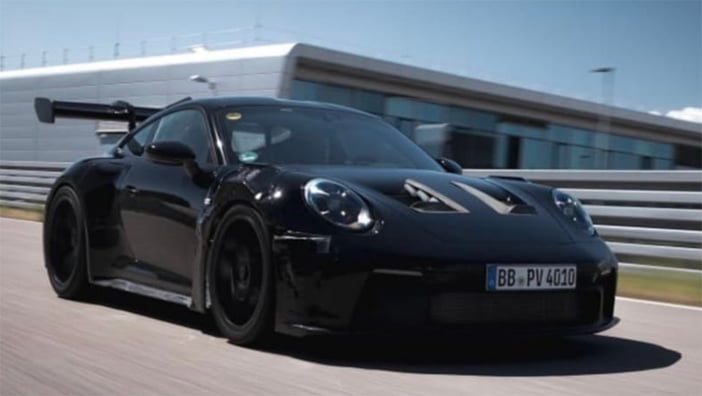
+++ It’s no secret that the new and used car markets in the UNITED STATES are insane right now, but there’s more than one facet to the issue. iSeeCars, a car search engine that conducts market research, recently published a list of the fastest-selling new and used cars. The data supports much of what we already know, but the numbers behind some of the models may surprise you. The fastest-selling new car in June 2022 was the Subaru XV / Crosstrek, with an average time of 12.9 days to sell. The average sales price for the XV / Crosstrek in June was $30.299, so people are buying higher-end trims of the car, which in base form starts at around $24.000. The Honda Civic, Subaru Forester, Honda CR-V and Subaru Impreza round out the top-5. All of those vehicles’ average sales prices were well above their respective models’ starting prices, meaning people are buying more expensive models or are paying markups. Neither of those things are favorable for buyers and offer only a partial benefit to dealers who are struggling to find cars to sell. Karl Brauer, iSeeCars’ executive analyst, notes that high gas prices are driving some of the craze for smaller and hybrid vehicles. The Honda Civic and CR-V are great examples, as the automaker can’t keep enough inventory of either model on dealers’ lots. Civic sales decreased by 54 percent and CR-V sales by 45 percent compared to 2020 because there aren’t enough units to go around. Things are even crazier on the used car side of things. The Tesla Model Y is the fastest-selling used car right now, but the $69.784 average sales price outpaces the EV’s new price by more than 10%, and that’s for the range-topping Model Y Performance model. The Toyota Prius Plug-in isn’t much better. At number 2 on the list of fastest selling used cars, its average price of $31.867 is around $1.400 more than a brand-new mid-range trim. The same is true for many cars on the list, where the average used sale price outpaced new-car prices. Used car prices are partly driven by new car availability and customer demand. The wait to receive a newly ordered Tesla Model Y stretches into 2023, so, understandably, people are willing to pay for the privilege of skipping that line. +++

